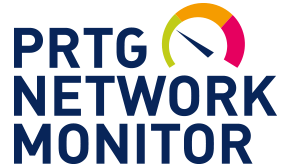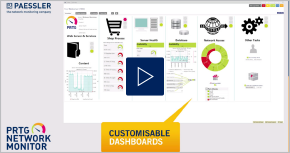The Basics of Webserver Performance Testing
The Business View
Today many websites have a serious business background and are mainly run to sell a service or a product to make money.
Everybody running a business on the web has seen statistics how fast a customer clicks away to your competitor if your server reacts too slow or not at all.
Aren't you cancelling the checkout of a shopping cart if the webserver does not react within 5-20 seconds?! If the visitors to your web site know about your slow website before you do, it may cost you a lot of money!
For the owner of a website this means: Test and monitor your website!
Not only functionality testing (does the website do what it is meant to do) and usability testing (does the user understand what is going on in his browser window) but also performance testing (does the user get results in an acceptable time) is important.
Your goal must be to ensure your customer always gets the right answer to his mouseclick within a few seconds at anytime! Ensure that 95% of requests are processed in less than 10 seconds.
Jakob Nielsen suggests the following views (from "Website Usability" by J.Nielsen):
- Download Time below 0.1 s : User feels that the system is reacting instantaneously.
- Download Time below 1.0 s : User experiences a slight delay but he is still focused on the current website.
- Download Time below 10 s : This is the maximum time a user keeps focused on a website, but his attention might already be distracted.
- Download Time above 10 s : User is most likely distracted from the current website and looses interest.
Using Webserver Stress Tool you are able to know if you have a performance problem due to load problems and you will be able to drill down to the problem!
By the way: Paessler also offers a solution to monitor your webserver after it has been deployed to the web, visit PRTG Network Monitor for more details!
The Technical View
Moving the focus of our thoughts from the business to the technical viewpoint we discover the following questions that need to be answered to ensure that the goals from the business viewpoint are met:
- Is your webserver prepared for as many users as you expect?!
- Is your webserver prepared for increasing load over the month/years?
- Does your webserver survive a massive peak of users (e.g. if your website is mentioned on national TV)
- How many users can your server handle before users will get error messages or timeouts?
- How long does it take for a visitor to receive a page under no load, little load and heavy load?!
- Does your application or shopping cart support simultaneous users at all?!
- Are the CGIs, databases or scripts programmed as fast as possible and do they interact with each other correctly under heavy load?!
- Is the hosting service doing a good job?!
- Is the internet connection bandwidth sufficient?!
- Is that expensive hardware too small or too powerful?!
You need to find out all of these answers!
Performance-, Load- or Stress-Testing?
These three words are often used synonimously, but there are differences:
- Performance-Tests: Are used to test each part of the webserver or the web application to find out what parts of the website are slow and how you can make them faster. Think of it as testing of single webpages/scripts.
Webserver Stress Tool supports this type of test by the ability to running some 20-40 simultaneous requests on one url and recording the average time until the requests are answered. By changing the programming code you will be able to find the points you have to take care of to gain more website performance. Usually this type of test is run without requesting all the images etc. in a webpage to get more exact results about the script processing - Load-Tests : Are done by testing the website using the load that you expect to have on your site. This is something like a real world test of the website.
First you have to define the maximum request times you want the customers to experience, this is done from the business and usability point of view, not from a technical point of view. At this point you need to calculate the impact of a slow website on your company sales and support costs.
Then you have to calculate the anticipated load and load pattern for your website (see next section for details on load calculation!) which you then simulate using Webserver Stress Tool.
At the end you compare the test results with the requests times you wanted to achieve. You know you have some work to do when requests take longer then time out or even generate error messages! - Stress-Tests: Are simulated brute force attacks with excessive load on your webserver. In the real world situations like this can be created by a massive spike of users - far above the normale usage - e.g. caused by a large referrer (imagine your website being mentioned on national TV).
The goals of stress tests are to learn under what load your server generates errors, whether it will come back online after such a massive spike at all or crash and when it will come back online.
Calculation of load and load pattern
This is probably the trickiest question in conducting performance tests on websites.
First, remember that there is a difference between users, transactions, pageviews and hits:
- One user creates several (trans-)actions (e.g. visit Homepage, search product, view product's details, buy a product etc.)
- One (trans-)action creates several pageviews (e.g. add products to shopping cart, go to checkout, enter creditcard etc.)
- One pageview creates several hits (e.g. framesets, images, applets etc. of one webpage)
If you already have your website online it is a good start to use a good logfileanalyzer on your logfiles. You can find out how many people access the site per day and per hour, what pages/scripts are used how often etc.
If you are working on a new website you have to find the numbers and pattern yourself. One way to define the load pattern could be:
- Step 1: From a business point of view come up with the target number of users.
- Step 2: Define a couple of different "model users" (e.g. teen kid, mature business customer, senior citizen etc.) and surf from their point of view through the website. Track the webpages they access and gather these stats.
At the end you should have a list of URLs and their frequency of use.
There is a difference between the number of users using your website at one time and users sending simultaneous requests to your website!
If you have 200 simultaneous users clicking a link every 20 seconds you have 600 clicks per minute (3 per user per minute) or 10 simultaneous users per second. This number would be the number you simulate with Webserver Stress Tool.
Remember to take into account that additionally to the average load of your website there could be spikes in usage generated by marketing activities (e.g. newsletters, banners, TV commercials etc.) or simply by seasonal situations (e.g. Valentines Day for a flower shop website).
Now feed this data into Webserver Stress Tool and hit "Start Test" and keep your fingers crossed!
When does testing start?
The answer is simple: You cannot start performance testing early enough when building web applications!
It is even a good idea to start performance testing before a line of code is written at all! Early testing the base technology (network, load balancer, application-, database- and web-servers) for the load levels you plan for can save a lot of money when you can already discover at this moment that your hardware is to slow. Also the first stress tests can be a good idea at this point.
The costs for correcting a performance problem rise steeply from the start of development until the website goes productive and can be unbelievable high for a website already online.
During software development all programmers should have access to performance test tools from an early stage on to test their own code for performance and for parallel execution problems (e.g. caused by database locks or other mutexes). Each developer should be responsible not only for the functionality of his code but also for good performance of his pages!
As soon as several webpages are working the first load tests should be conducted and from there on should be part of the regular testing routine each day or week or for each build of the software.
About Webserver Stress Tool Freeware
What is it?
The free Webserver Stress Tool is a comprehensive HTTP-client/server test application designed to pinpoint critical issues in your web server that may prevent optimal performance.
What does it do?
By simulating the HTTP requests generated by hundreds or even thousands of users, you can test your web server performance under normal and excessive loads to ensure that critical information and services are available at speeds your end-users expect.
Detailed test logs and several easy to read graphs make analyzing results a snap. Webserver Stress Tool for Windows (2003 R2, Vista, 7, 2008) can benchmark almost any web server (e.g. static pages, JSPs/ASPs, or CGIs) for performance, load, and stress-tests.
Why should you use Webserver Stress Tool?
Using Webserver Stress Tool when developing and running Websites is important for your web infrastructure:
- Maximize Uptime: Webserver Stress Tool ensures that critical issues in your website are resolved before they bring down your web resources
- Maximize Performance: Webserver Stress Tool ensures that your websites and applications are given the server resources they need when they need it to guarantee a high quality user experience
- Maximize ROI: Webserver Stress Tool ensures that you are getting everything out of the investment in your webserver technology through consistent and in-depth testing and analysis.
Maximize Value: Webserver Stress Tool is the most cost-effective solution in the market for simulating performance, load, and stress tests for your web server. - Minimize Efforts: Webserver Stress Tool installs in 5 minutes and works with all web servers
Read more about Webserver Stress Tool
Learn more about PRTG
More than 500,000 administrators rely on PRTG Network Monitor every day to monitor their LANs, WANs, servers, websites, appliances, URLs, and more. It comes with an easy-to-use web interface and you can easily share data from it with non-technical colleagues or customers, including live graphs and custom reports. But see for yourself what PRTG can do for you!
|
PRTG |
Network Monitoring Software - Version 24.2.94.1400 (April 10th, 2024) |
|
Hosting |
Download for Windows and cloud-based version PRTG Hosted Monitor available |
Languages |
English, German, Spanish, French, Portuguese, Dutch, Russian, Japanese, and Simplified Chinese |
Pricing |
Up to 100 sensors for free (Price List) |
Unified Monitoring |
Network devices, bandwidth, servers, applications, virtual environments, remote systems, IoT, and more |
Supported Vendors & Applications |
|

